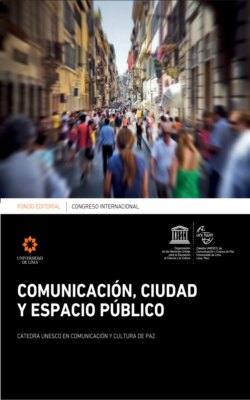Читать книгу Congreso Internacional Comunicación, ciudad y espacio público - Ángeles Margarita Maqueira Yamasaki - Страница 8
The Power of Expertise
ОглавлениеThe ambivalence in Eco’s poetics of the open work offers a possibility to reconcile the conflicting relation between order and chaos, authority and individual expression, design and contingency. These relations are particularly relevant in the context of design processes with citizens’ participation, where the power relations between author and addressee acquire a prominent status. In this context, design experts can play a key role in supporting social inclusion and mediation, circumventing the anxiety, discomfort and tension, that threaten the everydayness of ordinary people in the face of ambivalence and contingency.
The entwined relation between ambivalence, contingency and the role of the expert was insightfully explored by Zigmunt Bauman, in his Modernity and Ambivalence, published in 1993. In this book, Bauman argues that in modernity’s battle of order against chaos in worldly affairs, its project of a rational-universal world would know of no contingency and no ambivalence (Til, 2009)6. In fact, he goes on stating, “the residents of the house of modernity had been continuously trained to feel at home under conditions of necessity and to feel unhappy at the face of contingency”. Bauman further stresses that contingency “was that state of discomfort and anxiety from which one needed to escape by making oneself into a binding norm and thus doing away with difference” (Bauman, 1993, p. 233).
Despite the strong ideological apparatus that supported the project of modernity, it failed to eradicate ambivalence and contingency. It promoted, however, a noticeable displacement of ambivalence from the public realm to the private sphere. In fact, as Bauman puts it, with modernity’s drive to transfer ambivalence from the public to the private realm, experts became key figures in the mediation between the social and the personal. To overcome the anxiety caused on the individual by ambivalence, the expert becomes someone on whom we could truly trust, “one that combined the person’s capacity to understand with the power of science to make the right decisions” (Bauman, 1993, p. 199). The importance of the expert, as Bauman claims, is not so much related with his or her actual qualities or skills but how they are perceived by the recipients of the services. “The expert is, so to speak, a condensation of the diffuse need of trustworthy — because supra-individual — sanction of individuality”. And he goes on pointing out that
“As an interpreter and mediator, the expert spans the otherwise distant worlds of the objective and the subjective. He bridges the gap between guarantees of being in the right (which can only be social) and making the choices that one wants (which can only be personal). In the ambivalence of his skills he is, so to speak, resonant with the ambivalent condition of his client”. (Bauman, 1993, p. 199)
Writing in the early 1990s, Bauman brings about a fundamental reconceptualization of the expert as someone that performs a liberating role. Bauman’s work is, I would contend, essential to create a new intellectual framework for a reassessment of the experiences with citizens’ participation in design processes developed in the 1970s and 1980s.
In the next section of this article, I will discuss further the role of the architect in the design decision-making process. I will examine the plan for the deelgebied 5 and the project of the Punt en Komma housing complex, both part of the urban renewal of the Schilderswijk district in the Dutch city of The Hague, as a case study to explore the extent to which meaningful communication can help the architect to perform as a social mediator.
